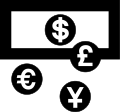History
The concept of an Association of African Central Banks was first proposed on May 25, 1963, during the Summit Conference of African Heads of State and Government in Addis Ababa, Ethiopia. At this conference, the leaders unanimously agreed to establish a preparatory Economic Committee tasked with examining a wide array of monetary and financial issues, in collaboration with national governments and the Economic Commission for Africa (ECA). [2]
Following this decision, the inaugural meeting of African Central Bank Governors took place in Addis Ababa from 15 to 22 February, 1965. The purpose of this meeting was to explore mechanisms for cooperation and to discuss the establishment of the Association's organs. Additionally, it was resolved to create sub-regional Committees, as defined by the ECA, comprising members or representatives from the Association. [2]
The ECA organized two conferences, in 1966 and 1968, which led to the adoption of the Articles of the Association of African Central Banks. [3] These Articles established the Association, as well as defined how it operates. [4]
Currently, the Association includes an Assembly of Governors, which serves as its governing body, consisting of all the Governors of African Central Banks. It also features a Bureau made up of the chairperson and vice-chairperson of the Association, along with the chairpersons of the sub-regional Committees, as well as the sub-regional Committees themselves, which consist of the Governors from the five sub-regions defined by the African Union.
Moreover, the Governors agreed to establish a streamlined Secretariat, located in office space and facilities provided by the Headquarters of the Central Bank of West African States in Dakar, Senegal. [5]
Structure and members
The AACB comprises several key organs:
Assembly of Governors: This is the governing body of the AACB. It consists of all the Governors of African central banks. [6]
Bureau: This includes the chairperson, Vice-chairperson, and chairpersons of the sub-regional Committees. [7]
Sub-regional Committees: These committees represent the five African sub-regions (North, West, Central, East, and Southern Africa) and comprise the Governors from these sub-regions. [8]
Secretariat: The AACB's Secretariat is headquartered at the Banque Centrale des Etats de l’Afrique de l’Ouest (BCEAO) in Dakar, Senegal, Its task is to provide administrative support and coordinate the organization's activities. [9]
Current members include: [10]
In 2023, Governor Harvesh Kumar Seegolam of the Bank of Mauritius was unanimously elected to become the Chairperson AACB. [1]
This page is based on this
Wikipedia article Text is available under the
CC BY-SA 4.0 license; additional terms may apply.
Images, videos and audio are available under their respective licenses.
